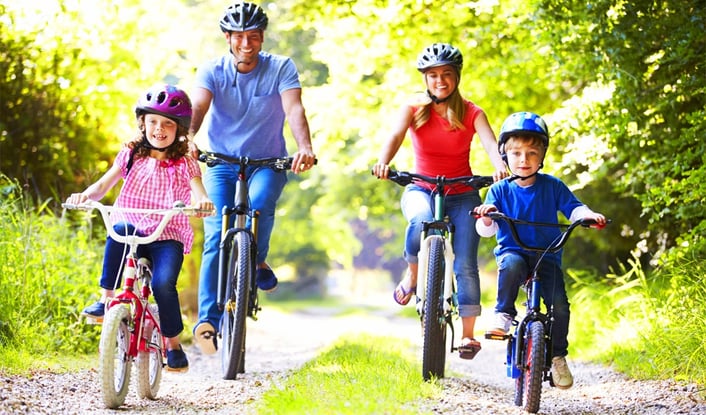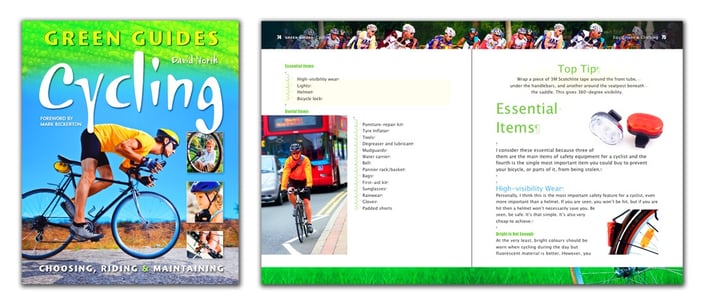There are so many types of bicycle that finding the right one can be daunting. Today's blog might not be able to tell you which bicycle is right for you, but it will help you to narrow the choices down from the many to a few.
Bicycles have become very specialized in recent decades and generally do what they are designed to do very well. But they no longer do other things quite as well or, in some cases, not very well at all. So, the first step is to think about what you will be using your bicycle for.

Image via sheknows.com
Multi-purpose Bicycle
Unless you are getting involved in a competitive sport, for which you will want a specialized bicycle, you may well want one that does several different things. Of these different purposes, you will probably want your bicycle to do one of them very well and the others well enough. Such bicycles exist, all you need to do is make a list of the things you will use your bicycle for, such as getting to work quickly or being able to carry all of your shopping.
- Top Tip: You probably won’t buy another bicycle for a long time, so spend the most you can afford. You will feel much happier with the bike you actually want rather than one that saved you some money.
The next step is to work out how quickly you want to get to work, how rough the trails are going to be and how much shopping or camping equipment you are likely to take. This is where the bicycle store staff will be able to help, or other cyclists on internet forums. In fact, 99 per cent of the questions you might have will probably have already been asked, and answered, on many a forum. Now you will have narrowed the range to half a dozen or fewer.
Budget
How much have you got to spend? Bear in mind that you will need about 10% of the cost of the bike to spend on locks, and you will also need lights and probably mudguards, a rack, tools, puncture-repair kit and so on. With a clear budget in mind, unless you are very well off, you will now have narrowed your choice down to just a few.
Bike Size
This is extremely important. It will determine whether you will have a comfortable experience of cycling or one of discomfort, pain and possible injury. It is unlikely to affect your choice, as most models of bicycle are available in a range of sizes, but it will be a critical factor if you decide to buy online or buy a used bicycle, so make sure that you know what the right size is for you. Ideally, go to a bicycle store and try some for size and seek advice from a shop assistant.
- Top Tip: A good saddle is important, so get one that matches your shape. Women’s saddles are slightly wider and shorter than men’s saddles. If the bike you want doesn’t have the right saddle, you can usually replace it easily.
The Right Size
For everyday, non-specialist cycling, many bicycles come in clothing-style sizes: small, medium and large, with some offering extra-small and extra-large. If that is the case, they should also give a guide to what those mean in actual centimetres or inches. Having a measurement will give you a more precise fit.
- Height: You should have 2.5 to 5 cm (1 to 2 inches) of clearance between you and the cross bar when you straddle the frame with both feet flat on the ground.
- Length: This is generally not considered in frame label measurements, but frames do increase in length as they increase in height. If necessary, you can adjust or replace the handlebars to make this more comfortable.
Buying From a Shop
This is your best option, as you get professional advice, the correct size and the guarantees and warranties that you won’t get with a used bicycle. At the very least it is worth visiting a few shops even if you intend to buy a used bicycle or online. After all, advice is free and so is the opportunity to sit on a bicycle and see how it feels.
- Top Tip: If you are buying a folding bicycle make sure to check that the folding mechanism works properly, as some of them can become very stiff. Make sure it locks securely into place too.
Buying a Used Bicycle
When buying a used bicycle through the internet, there are two important things to remember: the possibility that the bicycle might be stolen; and once you have bought it you probably won’t be able to return it unless it is ‘not as described’.
Used Bicycle Checklist
If you can get to see a bicycle before you buy it then so much the better. If it is online, then you can still use this checklist to ask the seller questions. Make sure you are familiar with the cost of this type of bicycle and how much replacement parts are.
- Right size: Straddle the frame with your feet flat on the ground. You should have 2.5 to 5 cm (1 to 2 inches) of clearance.
- Try before you buy: If it is the right size, take it for a test ride and see how it feels. Adjust the seat to the right height before you do and make sure the brakes work. Does anything feel loose or can you hear any creaks or squeaks? Run through the gears to make sure they change smoothly.
- Frame: Examine the frame for overall condition, but especially for cracks, particularly in the areas where the tubes meet and where the wheels fit. If you find any then don’t buy the bicycle, as a cracked frame is very dangerous to ride.
- Wheels: Turn the bicycle upside down and spin the wheels looking at the rim as it passes the brake pads. If you see any wobbles, the wheel is not true. This is not too expensive to fix, although a new wheel might be cheaper. If you hear any ticking noises, the bearings may be worn. With the bicycle upright, try to rock the wheel from side to side. If it moves, and the axle nuts are tight, then there is a problem with the bearings. These can be costly to replace.
- Tyres: Check that the tread is not worn down, otherwise you will have to buy new tyres. Check for splits, tears, perishing and wear to the sidewall. Small splits can easily be repaired with super glue. Tears and perishing will mean that you will have to replace the tyre soon if not straight away, and wear to the sidewall is probably caused by misaligned brake pads, meaning that you will probably need to replace the tyre in the near future, even if you re-align the pads.
- Brakes: Check that there are brake pads fitted, the cables are attached and the brakes work when you pull the levers. If there is any stiffness or looseness then you will be able to adjust these quite easily yourself or, if you’re not maintenance minded, a bike mechanic can do it.
- Cranks: These are the arms that connect the pedals to the frame. Grasp one in each hand and try to rock them. If they move, the crank bolt may need tightening or there is a problem with the bottom bracket. These can be difficult to remove and replace if they are rusted in.
- Gears: If you have not been able to test ride the bicycle, turn the pedals with one hand and run through the gear changes for the front and rear to make sure they are smooth. This is easier with an assistant as you will need to have the rear wheel off the ground.
- Sprockets: These are the cogs next to the pedals and the rear wheel that the chain travels over.
- Cables: If these are rusty or frayed they will need to be replaced.
- Seatpost: Check that this slides easily in the tube. If it is stuck, you may have a problem as they can be very difficult to free up.
- Headset: Holding the handlebars with the brakes on, push the bike forwards and backwards. If you hear a ‘clunk’, the headset is loose. Holding the frame near the handlebars, lift the front wheel off the ground. The handlebar and front wheel should flop to one side or the other. If not, it is too stiff.
This is just a snippet of the expert advice that can be found in our book Cycling: Green Guides. Take a closer look at the title here, or click here for Amazon.
Links
- Need some tips for safe cycling? Just click here
- To learn how to replace a worn chain, click here
- Or for tips on brake maintenance, click here





